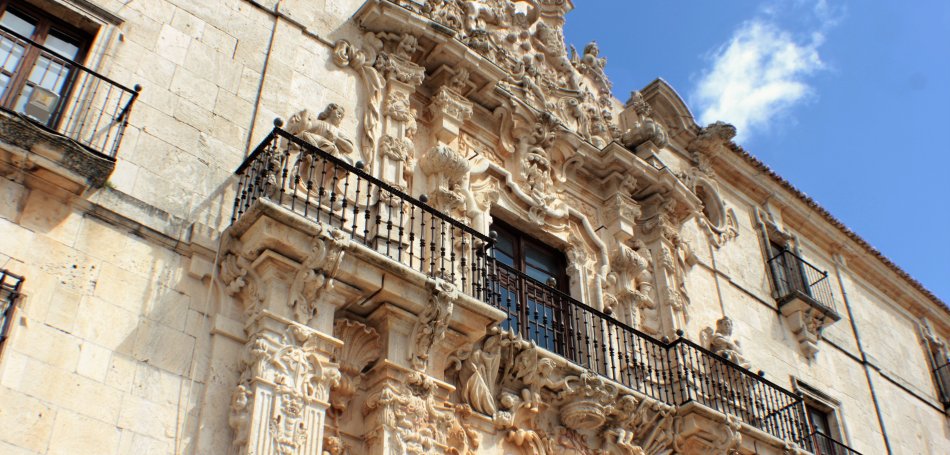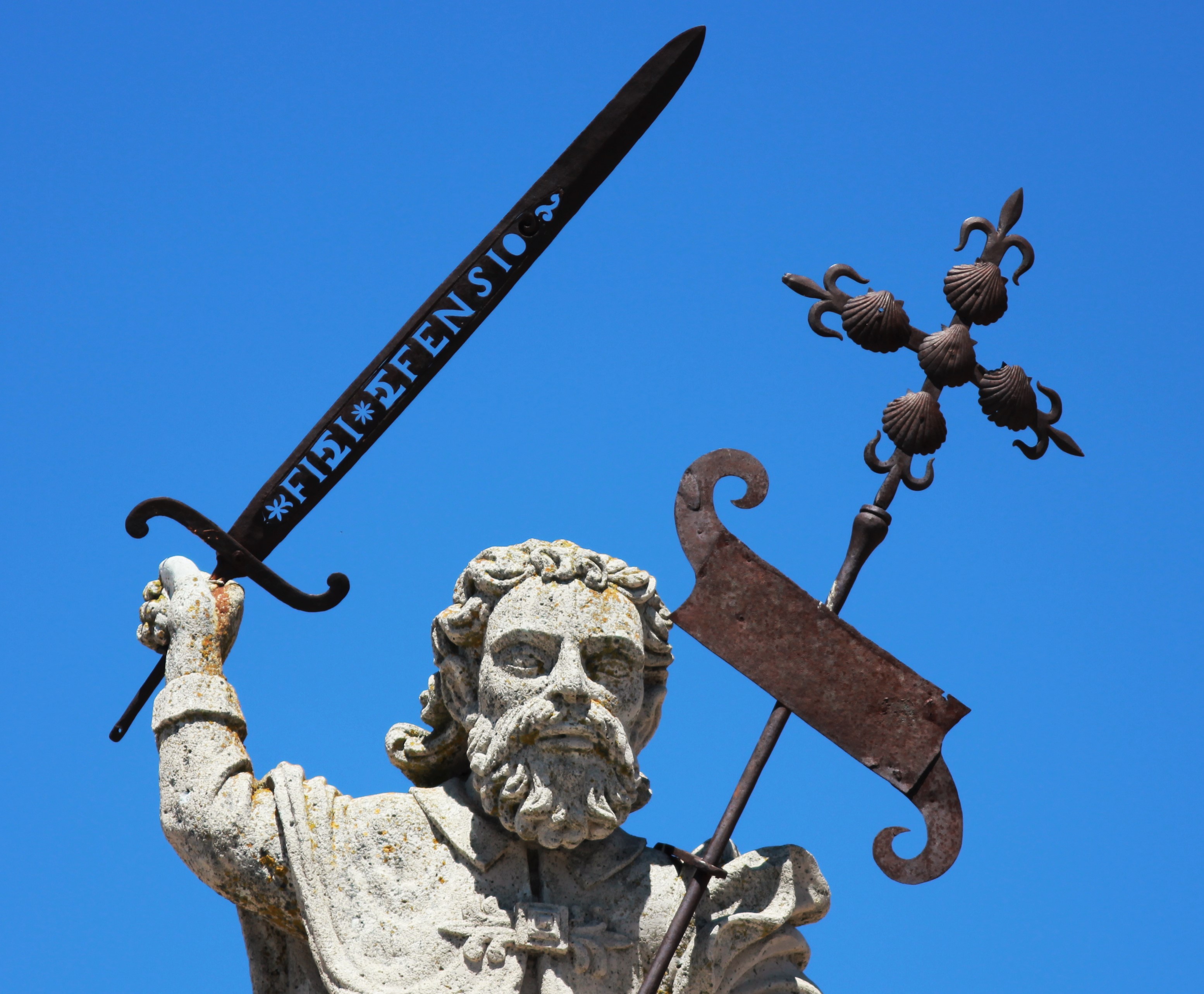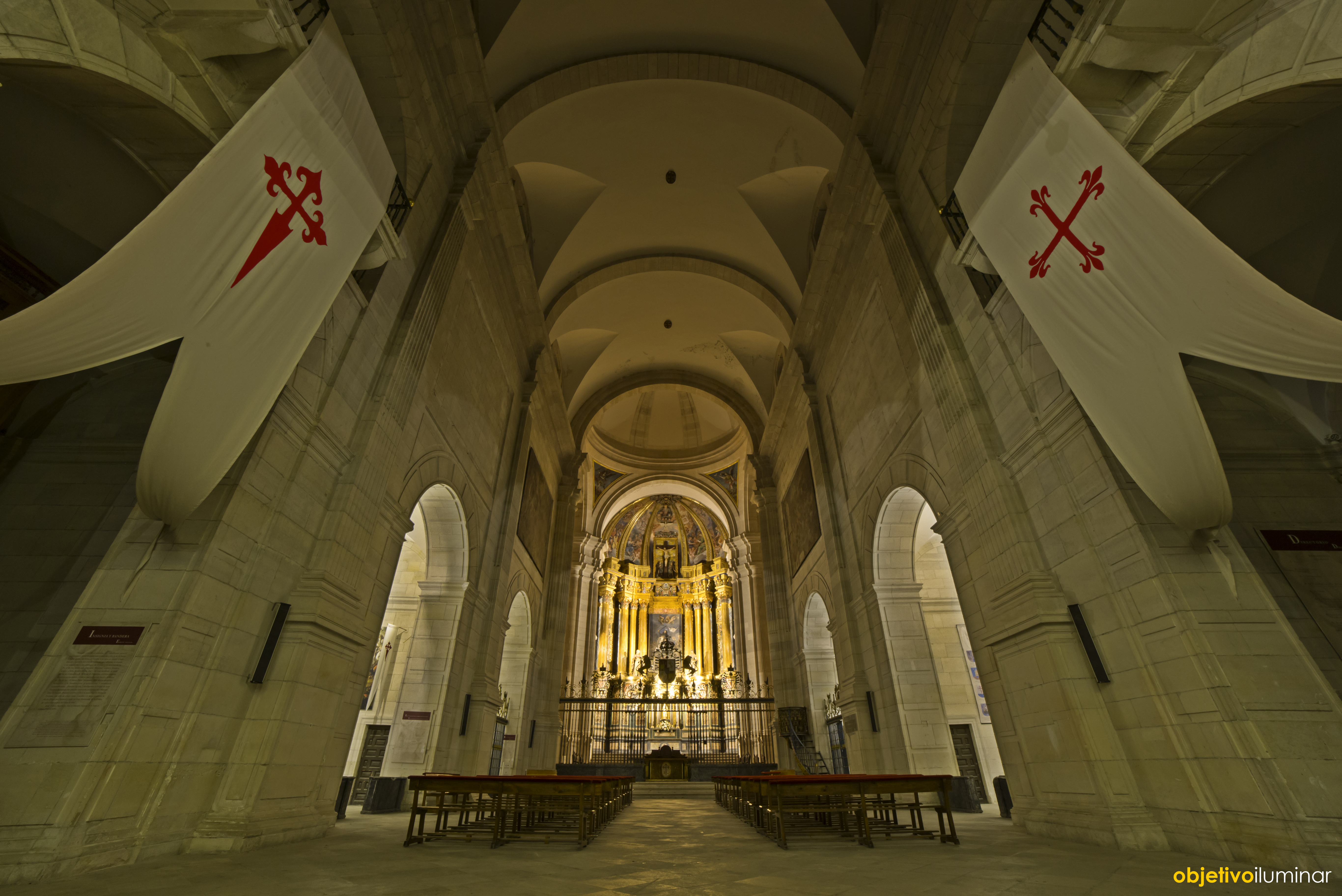
- publicado 03.02.2024
- por Cuenqueando
- Monasterio de UclesUclesUcles Monastery
Uclés and the Monastery of the Order of Santiago
The town of Uclés is one of the most historic places in Cuenca, not only does it house one of the most emblematic representations of the Spanish Renaissance, but within its walls it keeps centuries of history.
HISTORY
You turn the Portillo curve and there it is, motionless and serene; As Napoleon said before the pyramids of Giza: centuries of history contemplate us. And Uclés has witnessed great chapters in our history. From his castle, now in ruins, and his magnificent monastery, the lines of a past have been written that have been marked in the future of these lands of Castile.
Uclés has a strategic geographical location, just 10 km from the A-3, it is located next to an important communication route. One hour from Madrid and 2 hours from Valencia, it becomes a mandatory stop on this route that connects the center of the country with the Valencian coast. Although it is often a place of passage, more and more people choose it as a destination for a rural getaway, the great heritage, natural and gastronomic wealth of the area makes it have a strong appeal.
The history of Uclés dates back, as in many cases, to pre-Roman and Roman times, where there was a small enclave here, which is still witnessed by an ancient aquatic sanctuary, Fuente Redonda, which was dedicated to the indigenous god Airón and is today one of the main places in Uclés. In this place we can see a circular fountain fed by a small stream next to which stands an altar dedicated to this pre-Roman divinity, god of deep waters, which is why he was linked to the underworld.
The importance of the Roman Cuenca will be guided by the trade in lapis specularis, the crystal of Hispania, whose mines can currently be visited. Near Uclés are the Roman Mines of Lapis Specualris the Cueva del Sanabrio, just 20km from Uclés and 6km from Huete. They can be visited on weekends and we recommend prior reservation because the mines are accessed in small groups.
But its true importance begins in the Middle Ages, as it was an important focus of control of the territory by Muslims, especially from the unstable time of the Taifas. Uclés went from Muslims to Christians and vice versa regularly, being located in a strategic area for the control of the Tagus, until the decisive battle of Uclés took place in the year 1108, where King Alfonso VI lost the only male child of he. It will be Alfonso VIII who definitively conquers Uclés and donates it first to the Order of Saint John (Order of Malta), to later grant it to the Order of Santiago. It will be from this moment on that Uclés will be a reference point on the Castilian map.
The Sovereign Military and Hospitaller Order of Saint John of Jerusalem, Rhodes and Malta, known as the Order of Malta, was founded around the year 1048, within the framework of the Crusades. This order has a mixed character, along with its hospital activity, it developed military actions against the Muslim armies, its founding motto is Tuitio Fidei et Obsequium Pauperum, defense of the faith and service of the poor.
The Order of Santiago settled in Uclés and made it its Caput Ordinis, that is, the capital of all the mastership and administrative center of the Order itself, a fact in which lies the subsequent importance of Uclés. For this purpose, a Monastery with its corresponding Church was built on the old Arab fortress, of which the Pontido, Palomar and Albarrana towers are preserved. But this complex underwent a complete transformation starting in the 16th century, resulting in the imposing Monastery that today crowns both Uclés and the entire landscape for several kilometers around.

This religious and military order was founded in the 12th century with the aim of protecting pilgrims who came to Compostela and expelling Muslims from the Iberian Peninsula. The religious foundation is attributed to Alfonso VIII, with the approval of Pope Alexander III who granted a bull on July 5, 1175. The order spread quickly because its rule was less rigid than other orders, and it was the only military order that allowed marriage: and to remedy human weakness, marriage is allowed to those who could not be continent […]. The knights of the order were present in all the war actions of the Reconquista and their territories extended mainly through Castile. The first notable military action in which they intervened was to help the army of their protector Alfonso VIII in the capture of the city of Cuenca, in 1177. Their contribution in said conquest was so important that King Alfonso VIII gave up conquered lands among which That's what Uclés found.
Alfonso VIII gave control of the Castle of Uclés to the Knights of Santiago with the purpose of protecting both that region and that of Huete from possible Muslim incursions. Although the castle had been owned by the Order of Malta since 1163, the king expressed dissatisfaction with its performance during their time in charge, as they carried out no notable actions. For this reason he withdrew possession of said border castle in favor of the Order of Santiago. On January 9, 1174, the castle and town of Uclés were handed over by Alfonso VIII to the master of the Order, Pedro Fernández de Fuentencalada. A beautiful miniature from the Tumbo Menor of Castile shows this solemn ceremony attended by the prelates and nobles of the kingdom and Alfonso VIII together with his wife Eleanor of England.
UCLES MONASTERY
The Monastery of Uclés, known as El Escorial de la Mancha, began its construction in 1529 with Charles I, and was practically completed during the Austrian Dynasty, although the last phase already belongs to the reign of Philip V, being completed in 1735. The Original traces are by Enrique Egas. The building is a master class in architecture and iconography. In the first phase of late Gothic, the Plateresque-style eastern façade and the sacristy were built. In the Renaissance, the construction of the church was carried out, as well as the north and west facades in Herrerian style. The last stage, corresponding to the Baroque, was characterized by the creation of the imposing south façade, the construction of the cloister and the construction of the outstanding main staircase.
One of the first rooms built is the refectory whose roof is topped by one of the best wooden coffered ceilings in Spain, presided over by Emperor Charles V and 36 octagonal coffered ceilings with portraits of illustrious people. One of the caskets houses an enigmatic representation of a skeleton wearing a count's crown with the inscription "you, noble men, know that I forgive no one", remembering the emptiness of life and the certainty of death. Likewise, the sacristy is one of the most impressive rooms of the Plateresque style, where the mark of Andrés de Vandelvira is present. In the spring of 1530, Andrés de Vandelvira arrived in Uclés, as a master stonemason under the direction of his father-in-law, the architect Francisco de Luna.
Its main facade is overwhelming, made in the Churrigueresque style, attributed to Pedro de Ribera. He was one of the most important architects of the Spanish Baroque, a disciple of José Benito de Churriguera, who continued with his exuberant and profuse style. His mastery is reflected in the conception of the south façade as an altarpiece, with profuse ornamentation framed by decorative pilasters. As we ascend the view, Ribera displays an entire iconographic repertoire based on lions, crosses, musicians, trophies, warriors... a complete apotheosis of the order until it is crowned by the bust figure of Santiago brandishing a sword on which the inscription fidei reads defensio (defense of the faith). Also at the base of the torso you can read caput ordinis, alluding to the character of the building.
Crossing the portico we arrive at its spectacular 18th century cloister arranged in two sections and 36 semicircular arches. The lower floor opens to the center of the patio presided over by a beautiful baroque style curb in charge of guarding the old cistern. The porticoed gallery opens through an archway that presents a simple decoration with attached pilasters and semicircular arches in whose key we find an individualized decoration. On the upper floor the gallery is closed by a balcony with attached columns and a very sober decoration. Currently, cultural events take place in this space that acquire great beauty in their representation.

And above all the architectural complex stands out the church, in the Herrerian style, completed in 1598 and made by Francisco de Mora. Its construction earned it the nickname of the Escorial of La Mancha. Herrera's architecture was born from the hand of Juan de Herrera with the construction of the Monastery of El Escorial, which is why the intervention of Herrera's disciples gave it the nickname Uclés. Consisting of a single nave with a Latin cross plan with side chapels. The main nave is covered with an imposing barrel vault with lunettes. The transept with a gallon dome, the work of Antonio Segura, rests on ornate pendentives and is crowned with a lantern of notable height. The four Tuscan pillars that support the dome add great elegance to the architectural composition. Externally, the tower is topped with a slate spire so characteristic of the Herrerian style, culminating in a copper sphere, on which a weather vane in the shape of a gigantic rooster moves, and at the top, a cross of Santiago.
Under the floor of the Monastery, although its whereabouts are unknown, is the tomb of one of our most famous poets, Jorge Manrique, whose famous couplets he dedicated to his father also buried in Uclés.
In the Uclés enclave, memory is intertwined with architecture, forging an indelible experience in each visitor. This site, steeped in history, awakens a unique sensation that lasts in the collective memory. The majesty of its architectural structures, silent witnesses of the Reconquista, envelops those who explore it in a time journey towards that transcendental period. Uclés stands as a living testimony of medieval architectural greatness, where each stone is part of history. A visit to this enclave leaves no one indifferent, as its monuments and landscapes evoke the era in which the Reconquista marked the future of the Iberian Peninsula. The aura of Uclés is captivating, and those who have once experienced its charm are inevitably drawn to repeat the experience. Its emblematic monastery transports the visitor to a setting where the past comes to life in a tangible way.
 ES
ES EN
EN PT
PT